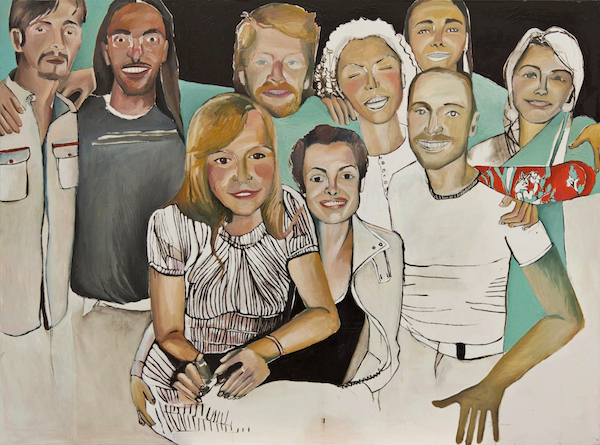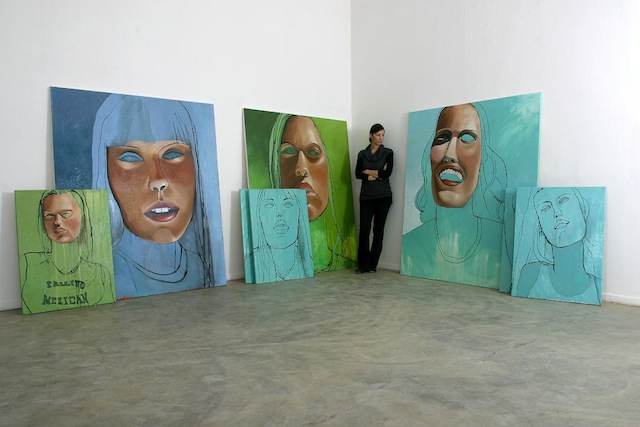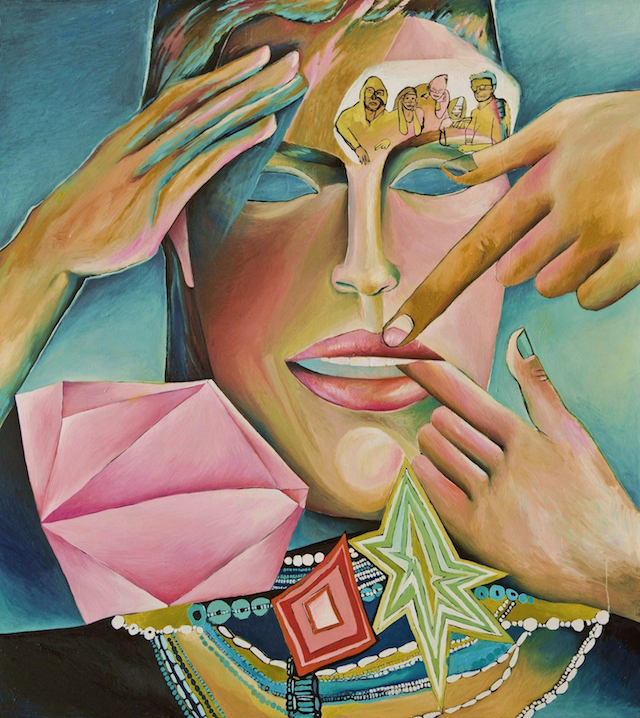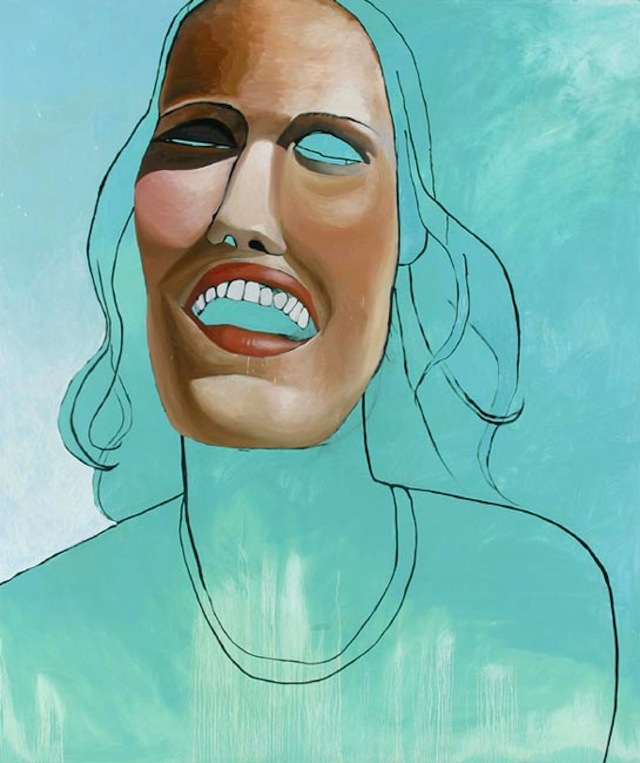Art
Painting moments in time: portraits by Petra Grozaj
“I paint what is closest to me,” artist Petra Grozaj has said of her work. Though she has experimented with installation and text-oriented paintings in the past, in more recent years, she has focused on painting vibrantly hued portraits of women with curiously exaggerated features. Aiming to find out more about the connection between Grozaj and her work, I recently ventured to her studio in the hills of western Zagreb.
Grozaj, fittingly dressed in paint-splattered overalls, greeted me at the door of her new workspace – a former mechanic’s garage, freshly whitewashed and sparsely equipped with an old wood-burning stove. Natural light filled the airy, open studio, perfectly showcasing Grozaj’s work in progress.
Her paintings, all exhibiting bold color and solid brushwork, are much larger than expected. The size, she says, allows her to blend colors and experiment with various brushstrokes in a way that wouldn’t be discernible on a smaller surface. Working and sometimes reworking her paintings, feeling out texture, color, and composition as she goes along, is an integral part of Grozaj’s practice – a creative style that she connects with authenticity.
“I started out drawing, then I discovered painting … People started to follow my work, and I started to become more educated; I found out new things, I was traveling … I started to think about my work more,” she explains. “In a way this was good, in another way, not so good. When you think about your work too much, you start to lose authenticity … My feeling was that I was not as honest as I was before. Now, I am actually not thinking too much…what I learned just comes out naturally. That’s my hope: that I will succeed in being honest.”
Grozaj explains that her work begins with a photograph or an image – or more precisely, an image that she connects with on some abstract, albeit highly personal level. “There has to be something in the photo … [I have to] have a connection with the image,” she begins, struggling to put this emotive response into words. “It’s some kind of reflection of a moment or situation that I experienced.” But she doesn’t try to replicate the photo exactly. Instead, she uses it as a guide, divining from it some inherent emotion or feeling that she then transcribes directly onto the canvas, without preliminary drawings or any sort of plan. The resulting portrait, in the end, is transformed by Grozaj’s own personal response to the image. Motioning to a huge, vibrant portrait inspired by a photograph of Bianca Jagger, titled Electric Dark, Grozaj muses on the transformation of her subject. “It’s not her, actually. Maybe it’s more me.”
She pulls out a clothing catalogue to further illustrate her point. “When I saw this photo,” she says, flipping to an image of a smiling blonde girl, “I recognized something in it. A reflection of some happy moments or something that was careless. But then I made it like these moments are falling apart,” she explains, pointing to her own reinterpretation of the image. Indeed, though the girl is still faintly there in the outline of her features, Grozaj has altered her enough that she is virtually unrecognizable. The stark outlines of her face and her hollow eyes transform the carefree expression of the girl in the catalogue into one of melancholy or anxiety.
Once Grozaj finishes painting a face, she begins to fill in the painting, often changing, repainting, and tweaking sections she has already finished. The background of Electric Dark, for example, has already undergone one transformation, from blue to bright green. When I visit Grozaj, she is considering repainting the green background white. This type of process is more interesting for Grozaj – she never plans out a painting before she gets to work. “Why watch a movie if you know how it ends?” she smiles.
It is Grozaj’s organic approach that often produces the most striking aspects of her works – for instance, the mask-like effect created by the empty eyes in a series of portraits from 2006. Grozaj explains that, as she painted, she realized that she did not have to fill in the eyes because, actually, they’re already looking at you.
Similarly, a large group portrait of friends stands out precisely because an area of white canvas and boldly sketched out outlines lends it an unfinished air. Grozaj explains that she realized while working that if she painted the entire canvas, it would be ordinary; unfinished, the portrait is more visually arresting and complete than if it were entirely filled in. These two works, together with a third in the studio – an intimate portrait of a woman standing waist-deep in water, looking down at her reflection – will be shown in December at Grozaj’s solo exhibition Moments in Time. The title of the exhibition, she says, refers to moments in her life and in the lives of the women in her portraits. It also relates to her quest for creative authenticity and her hopes for those who view her work.
“I would like that they experience that connection that I feel when I am painting. That they experience that moment. That they have some kind of experience or response,” she says. “The best would be that they are feeling that I can share my moment, what I experienced when I was painting it.”
Petra Grozaj’s work will be on display at One Sided Story, a group exhibition opening on October 3, 2013 at HDLU in Zagreb, and at Moments in Time, opening December 2 at the same venue.
Written by: Elaine Ritchel (@elaineritchel)










